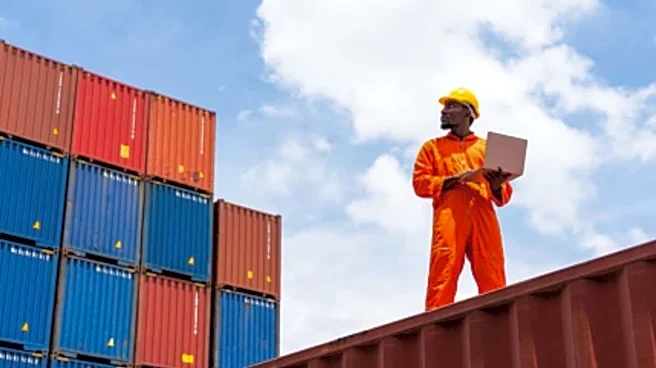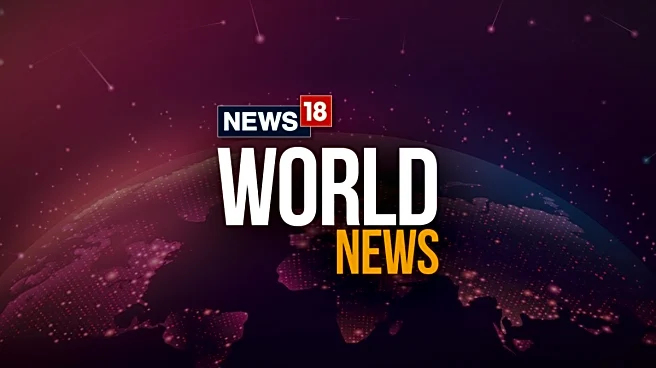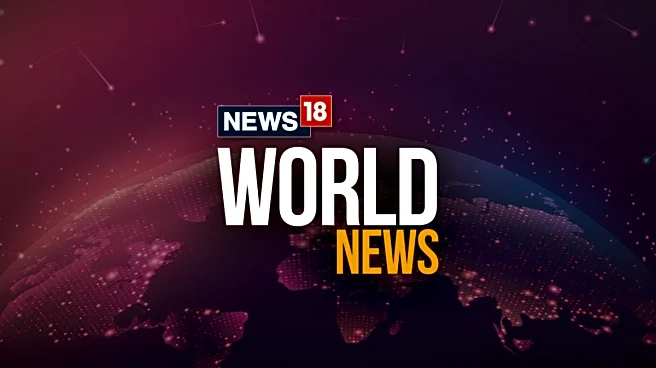For decades, the ‘Made In China’ phrase defined the global economy. From smartphones and sneakers to solar panels and semiconductors, China built the world’s most powerful manufacturing machine. But that machine is now facing unprecedented strain.
With trade wars, pandemic, and geopolitical tensions, global corporations have started pivoting production to countries beyond China. And in that global reordering, India finds itself standing at the threshold of a historic opportunity.
The question is no longer if supply chains will move, but where they will land. With the US and its allies rethinking dependence on Beijing, and multinational companies seeking new manufacturing bases, India’s name keeps coming up alongside Vietnam, Indonesia, and Mexico.
For India, which has long aspired to become a global manufacturing hub but struggled to deliver, the current shift represents a once-in-a-generation opening.
How The US-China Trade War Caused The Domino Effect
The trigger for the global shake-up was the US-China trade war, launched in 2018. It began with tariffs—hundreds of billions of dollars’ worth of goods slapped with import duties by both sides—but quickly escalated into something deeper: a technological and strategic decoupling.
In 2018, US exports to China dropped by 42% in some agricultural sectors, while US imports from China declined sharply following tariffs. By late 2019, the US had tariffs on about $350 billion of Chinese imports, with China retaliating on $100 billion of US exports.
Washington started restricting China’s access to critical technologies such as semiconductors, high-end chips, and even AI tools, citing national security. Beijing retaliated by curbing exports of rare earth elements vital for electronics and green technologies.
In 2025, when Donald Trump took office, the years-long trade war intensified, with the two countries getting entangled in tit-for-tat tariffs. But after he met with Chinese President Xi Jinping in South Korea last week, Trump agreed to lower tariffs on Chinese goods by 10% in exchange for Beijing cracking down on fentanyl. Thus, the effective tariffs as of November stand at around 47% on Chinese goods being imported into the US.
Despite the optics, multinational companies are wary and seeking a manufacturing base outside China.
Moreover, COVID-19 lockdowns shuttered factories, halted ports led to the supply chain chaos in 2020 and 2021. It revealed the dangers of relying on a single country for critical goods — pharmaceuticals, mobile phones, and microchips.
This combination of tariffs, technology tensions, and supply disruption lit the fuse for what analysts now call the ‘China Plus One’ strategy—keeping a manufacturing base in China, but adding another one elsewhere to hedge against risk.
The Global Race: Where Will the Factories Go?
As companies began scouting new destinations, Southeast Asia and South Asia became the focus. Vietnam, Indonesia, Malaysia, and Thailand all rolled out red carpets. Mexico lured US firms with proximity and trade agreements.
But India, with its massive market and deep labour pool, began emerging as a serious contender.
Apple became the face of this shift. Just five years ago, nearly all iPhones were made in China. Today, more than 14% of global iPhone production happens in India, according to JP Morgan estimates, and that share could rise to 25% by 2026.
Foxconn, Pegatron, and Wistron—the key Apple suppliers—have all expanded plants in Tamil Nadu and Karnataka. Samsung’s Noida facility is now one of the largest smartphone factories in the world.
In autos, Hyundai, Kia, and Suzuki are using India not just for domestic sales but as an export hub. Pharmaceutical giants are exploring India as a base for producing Active Pharmaceutical Ingredients (APIs) to reduce reliance on Chinese suppliers.
Even emerging industries like electric vehicles and solar manufacturing are seeing a surge in Indian investment as part of global decarbonisation efforts and supply chain diversification.
The trendline is clear: the world’s manufacturing map is redrawing itself, and India is being pencilled in more boldly than ever before.
Why India Is Suddenly in Play
The difference this time is not just geopolitical, it is policy-driven. In the past, India missed several global manufacturing waves because of slow reforms, weak logistics, and red tape. But in the past five years, the country has built an industrial foundation that makes it genuinely competitive.
At the centre of that shift is the Production-Linked Incentive (PLI) Scheme, a government initiative that rewards manufacturers for producing in India. Spread across sectors like electronics, automobiles, semiconductors, pharmaceuticals, and textiles, the PLI scheme offers financial incentives linked to output and exports.
Then there’s corporate tax reform—India now has one of Asia’s lowest tax rates for new manufacturing units, at just 15%.
Add to that an aggressive infrastructure push under the 2021 Gati Shakti plan, which integrates highways, ports, and logistics hubs with digital mapping to cut transit times. Industrial corridors like the Delhi-Mumbai and Chennai-Bengaluru corridors are being expanded to connect manufacturing clusters seamlessly.
Meanwhile, digital governance is quietly transforming India’s ease of doing business. Paperless customs, e-invoicing, and single-window clearance systems have cut procedural time and corruption.
These steps have made India not just attractive, but increasingly viable.
How Trade Diplomacy Is A Big Factor
India’s supply chain ambitions are also being bolstered by a new wave of trade diplomacy. In recent years, New Delhi has been signing Free Trade Agreements (FTAs) at a record pace.
In May, India signed an FTA with the United Kingdom that includes zero-duty access for 99% of Indian exports to the UK, while India will reduce tariffs on about 90% of UK goods. The deal provides easier entry for professionals in sectors like IT, architecture, and education. An annual quota of 1,800 visas will be provided for skilled professionals such as chefs, yoga instructors, and musicians.
In March 2024, India and a four-nation European bloc European Free Trade Association (EFTA) signed the Trade and Economic Partnership Agreement (TEPA), which came into effect from October 2025. Under the pact, India has received an investment commitment of $100 billion in 15 years from the grouping while allowing several products, such as Swiss watches, chocolates, and cut and polished diamonds, at lower or zero duties. The European Free Trade Association (EFTA) members are Iceland, Liechtenstein, Norway, and Switzerland.
In 2022, India-UAE signed the Comprehensive Economic Partnership Agreement (CEPA), which has already pushed bilateral trade above $80 billion in FY25. The key provisions of the agreement include immediate zero-duty access for 90% of India’s exports to the UAE, duty concessions for Indian gems and jewellery, and preferential treatment for aluminium, copper, and petrochemicals. The agreement also addresses intellectual property rights, government procurement, and digital trade, and includes mechanisms for dispute settlement and customs facilitation.
Around the same time, India signed the Economic Cooperation and Trade Agreement (ECTA) with Australia, offering duty-free access for 90% of exports. The trade has reportedly led to a 14% increase in India’s exports to Australia in 2023-24 compared to the previous year. The current bilateral trade stands at $24.1 billion. India and Australia are currently in negotiations to expand the scope of this existing agreement into a more comprehensive free trade deal.
These deals are vital because they don’t just open markets; they signal to investors that India is serious about being part of global supply networks.
India vs Vietnam vs Indonesia: Who Wins The ‘China Plus One’ Game?
In the early years of this diversification trend, Vietnam seemed unbeatable. Its proximity to China, extensive trade agreements, and export-oriented economy made it a natural first choice for electronics manufacturers.
But Vietnam’s smaller population and rising wages are creating constraints. Indonesia, meanwhile, has surged ahead in electric vehicle (EV) supply chains, thanks to its massive nickel reserves.
India’s advantage lies in scale. It offers a vast, English-speaking workforce, deep domestic consumption, and growing digital infrastructure. Unlike Vietnam or Indonesia, India can combine manufacturing exports with a domestic market of 1.4 billion consumers—a rare combination.
Still, there are gaps to bridge. Logistics costs in India remain higher (13–14% of GDP) compared to Southeast Asian peers (8–10%). Land acquisition, energy reliability, and skill training remain bottlenecks.
Yet, investors are noticing momentum. As one global trade consultant said that Vietnam and Indonesia can host a few factories; India can host an entire ecosystem. “The old leaders — Japan, Korea, the US, Europe — are past their peak,” Cameron Johnson, partner at Tidalwave Solutions and a global supply chain strategist, had told News18. “Outside of China, India is the only country capable of manufacturing at a true scale. The window is open, but not forever.”
Can Economic Payoffs Be Transformative?
Goldman Sachs estimates India could attract $350 billion in manufacturing exports annually by 2030 if it captures even a fraction of China’s outgoing production.
Already, India’s electronics exports have quadrupled in five years, led by mobile phones and components. Auto components and pharmaceuticals are next in line for expansion.
This boom could reshape India’s job landscape. The manufacturing sector currently employs about 11% of the workforce, but experts believe that could rise to 18-20% if the current momentum continues.
New clusters in Tamil Nadu, Gujarat, and Uttar Pradesh are becoming magnets for blue-collar employment, logistics start-ups, and small suppliers.
There is also a multiplier effect—each manufacturing job can generate two to three indirect jobs in transport, packaging, and retail.
What Other Advantages Can India Have?
India’s manufacturing rise is not just an economic story – it is a strategic one. As the US and its allies build a new architecture of “trusted supply chains”, India’s democratic governance, stable political system, and geographic position make it a key player.
Through the Quad alliance (US, Japan, India, and Australia) and the Indo-Pacific Economic Framework (IPEF), India is increasingly embedded in discussions around semiconductor resilience, critical minerals, and green technologies.
Japan and Australia are funding India’s infrastructure and technology parks. The US has endorsed India’s role in building alternative tech ecosystems—from 5G networks to AI research.
As Chinese influence faces pushback, India’s ability to emerge as a “neutral, reliable producer” gives it both leverage and soft power.
The Challenges That India Needs To Overcome
For all its progress, India’s manufacturing ecosystem still faces three persistent challenges:
Infrastructure bottlenecks: Despite rapid construction, many industrial clusters remain poorly connected to ports and logistics hubs. Power reliability and warehouse standards still lag global benchmarks.
Regulatory fragmentation: Labour laws and tax compliance differ across states, complicating scaling across multiple regions.
Skill gaps: India produces millions of graduates, but manufacturing-ready skills, such as automation, precision engineering, and robotics, are still in short supply.
Overcoming these challenges will require more than policy. It needs coordination between the Centre, states, and private industry.
What’s Next For India?
If India wants to sustain this wave, three shifts are essential:
Predictable policy: Investors need stability in tax, import, and trade policy. Frequent changes discourage long-term planning.
Skills and innovation: Manufacturing must evolve beyond assembly into design, R&D, and advanced engineering.
Green competitiveness: As global buyers demand low-carbon supply chains, India must integrate renewable energy and sustainable logistics into its manufacturing zones.
In other words, the race is not just to make things, but to make them smarter, faster, and cleaner.
The US-China rivalry may have started the process, but what follows could redefine the global order. For India, this is not just about attracting factories; it is about shaping the next industrial revolution.
If reforms deepen, logistics modernise, and skills catch up, India could evolve from an outsourcing hub to a true industrial powerhouse—one that anchors the global supply chain of the future.
As economist Arvind Panagariya, the chairman of the 16th Finance Commission and former Vice-Chairman of NITI Aayog, put it, “This is India’s second 1991 moment. The difference is, this time, the world is ready too.”


/images/ppid_59c68470-image-176284002797117597.webp)
/images/ppid_a911dc6a-image-176285983707220886.webp)
/images/ppid_a911dc6a-image-176277142453129581.webp)
/images/ppid_59c68470-image-176288002955646660.webp)





/images/ppid_59c68470-image-176291502511280018.webp)



/images/ppid_a911dc6a-image-176283383696556584.webp)
